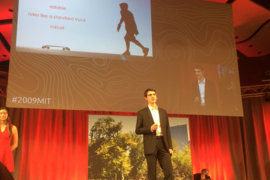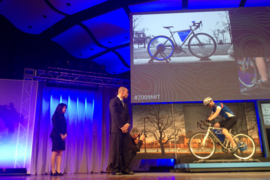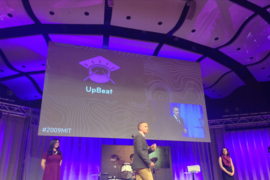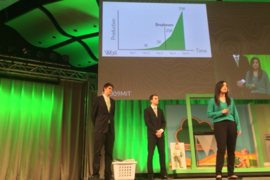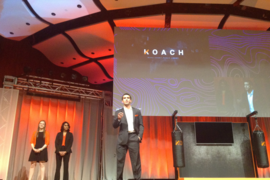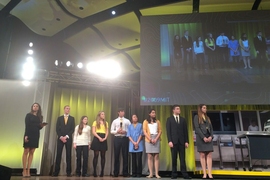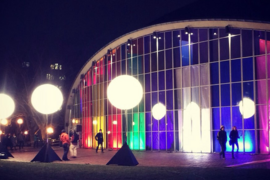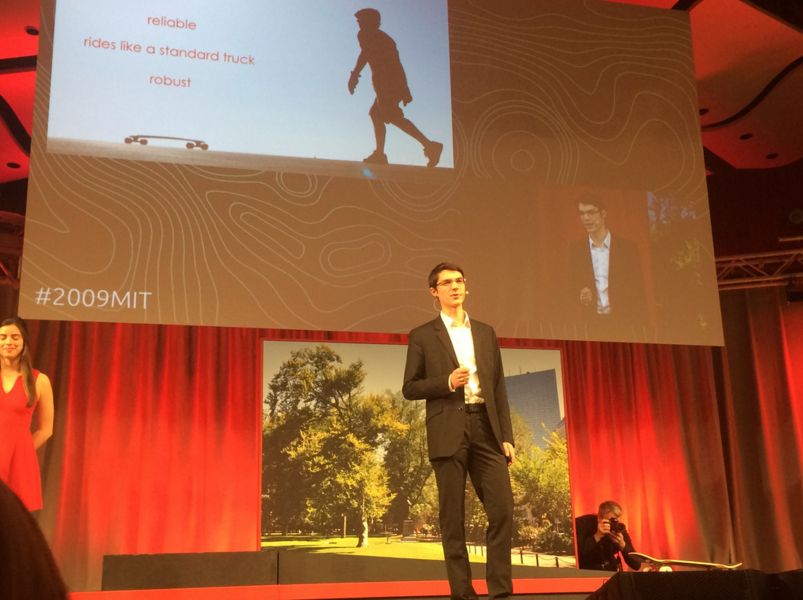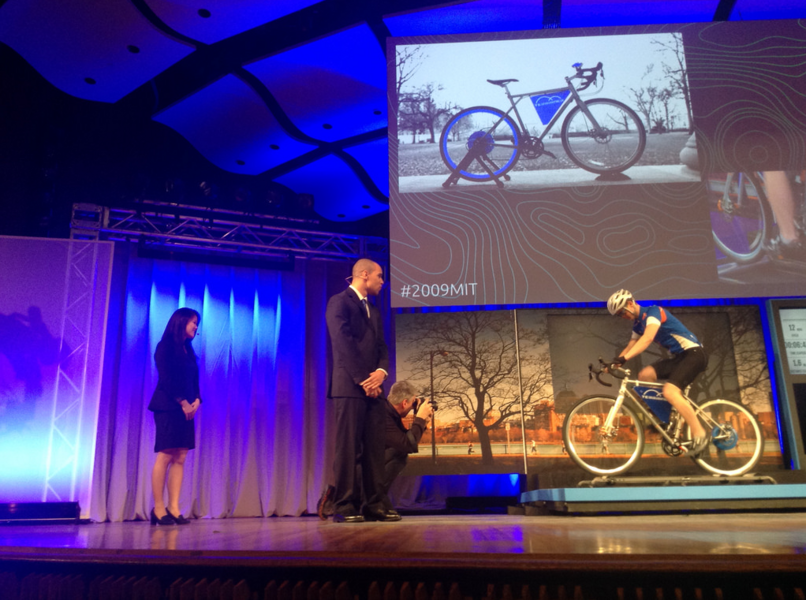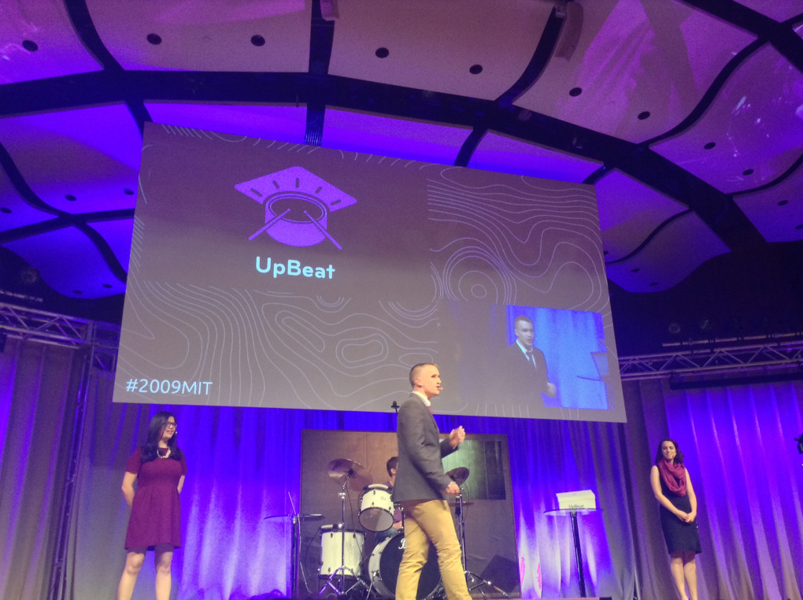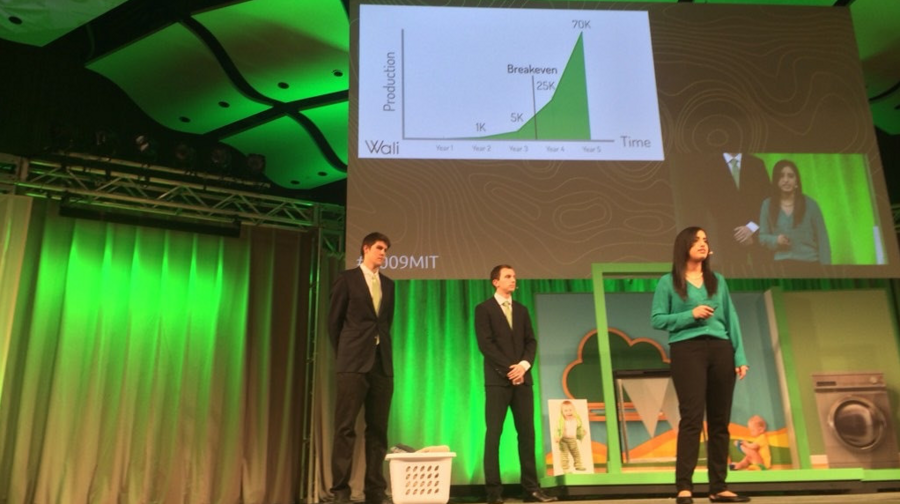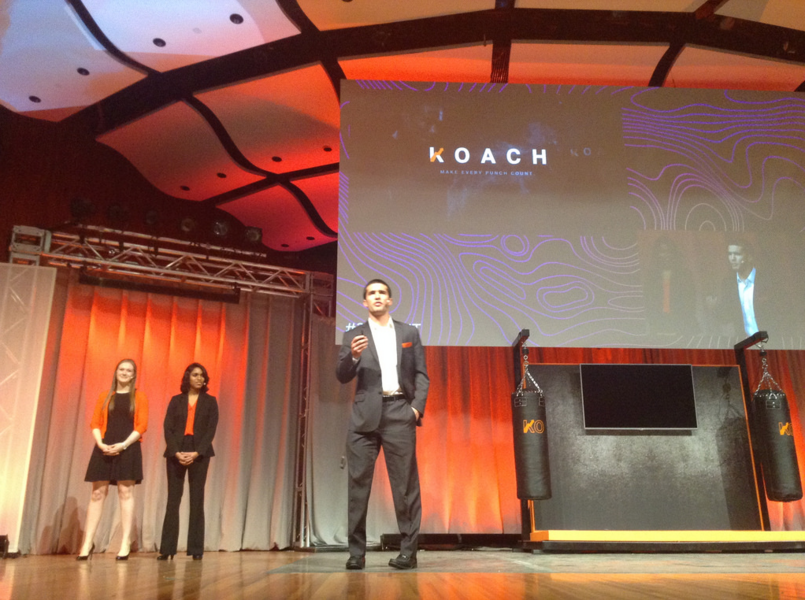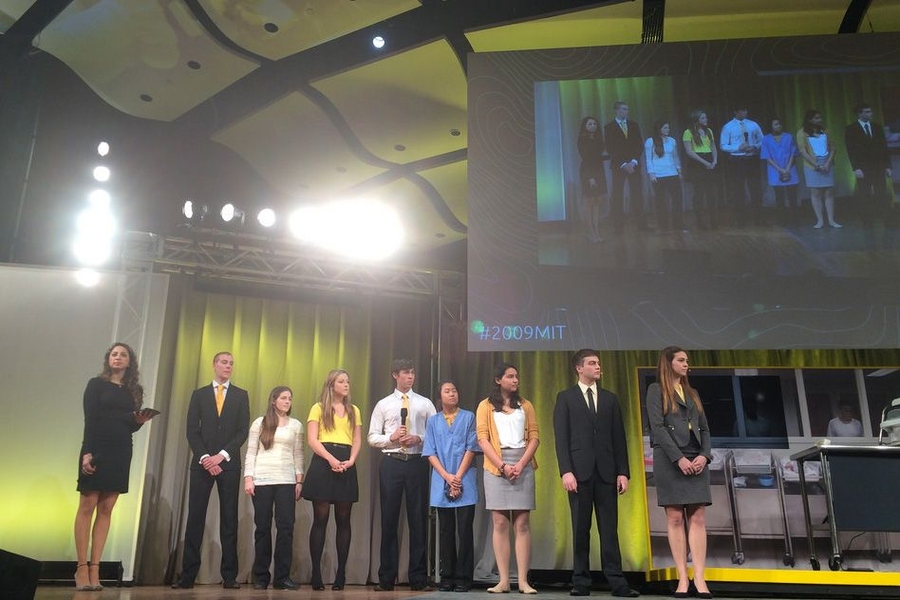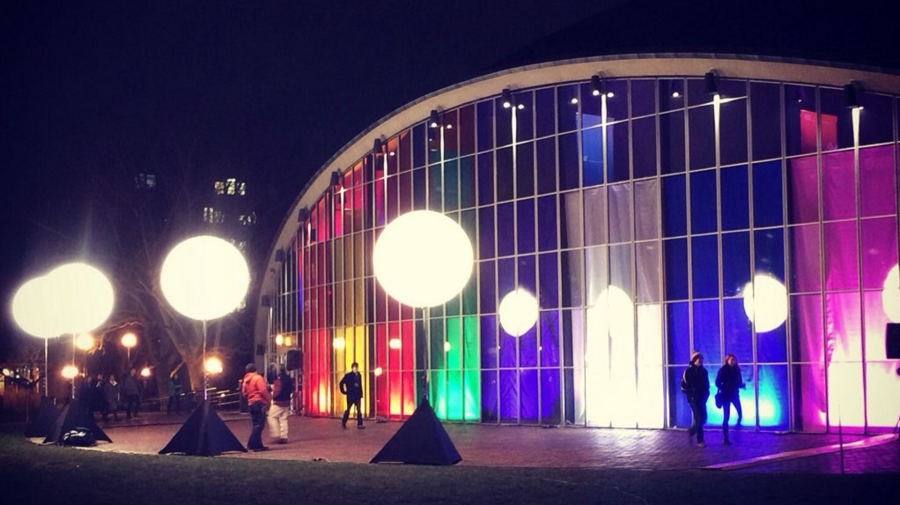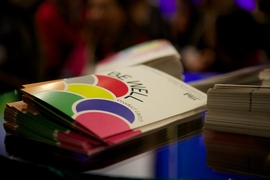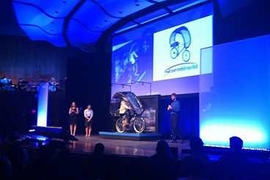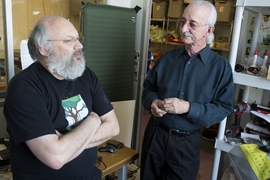At a packed and festive presentation in MIT’s Kresge Auditorium that felt more like a movie premiere than the conclusion of a serious class, last night dozens of students in eight teams presented the results of a semester of work in course 2.009 (Product Engineering Processes).
Capturing this year’s theme of “Adventure,” the product prototypes included sporting accessories for skiing, bicycling, boxing, and skateboarding; medical devices for amputees and premature babies; and helpful devices for musicians and parents. While audience members were invited to score the presentations on several criteria, the course instructor, professor of mechanical engineering and engineering systems David Wallace, stressed that the evaluations are simply another bit of feedback to help students develop their product-design skills.
Among the designs unveiled was a wrist-worn tracking system that could help a group of skiers locate each other at a sprawling resort, providing a means of notifying each other if one needs help. The device is designed to use its own radio-frequency communications channel, since ski resorts often have poor cellphone reception.
Another team produced a device to automatically stop a skateboard as soon as its rider dismounts, preventing the board from shooting off into traffic or hitting a bystander. The device instantly applies a brake as soon as the rider’s weight leaves the board.
Two other teams produced devices to help with fitness training. One converts a regular bicycle into a training bike by adding extra resistance to the wheels, displaying the cyclist’s level of exertion just as a stationary bicycle would in a gym. Another is an instrumented punching bag that measures the number and force of blows; it also allows for handicapping so that unequal boxers can compete one-on-one without actually laying a glove on each other.
One team produced a sophisticated baby gate that can be opened by an adult whose hands are full, while still safely blocking a child. The device senses the height of an approaching person, and requires a press of a lighted button to open, assuring security. The steel-and-plastic device is also designed to be more aesthetically pleasing than most baby gates.
Another team made a set of devices that can be attached to a drum kit, allowing a student to learn new riffs by following LED lights attached to each drum and cymbal, and also recording their performance and transcribing it into musical notation.
Two of the demonstrated products are medical devices: One is an improved socket for the prosthetic limbs used by amputees, which uses a vacuum pump in a plastic-enclosed sleeve filled with tiny grains to adjust itself to the exact contours of the person’s residual limb. This could help to solve a major challenge with prosthetics: the imperfect fit of the sockets, and their inability to adjust as a person’s body changes.
Another team made a simple, low-cost incubator for use in hospitals in the developing world, where the power supply can be unreliable. For an expected cost of $550 — compared to upward of $20,000 for a standard hospital incubator — the new device is designed to maintain the optimum temperature for premature infants for more than half an hour without electricity — the duration of many power interruptions in developing-world facilities.
The device could be a significant lifesaver, team members say: While premature babies in the industrialized world have a survival rate of more than 90 percent, in the developing world that figure can be just 50 percent. Three-quarters of those deaths could be prevented, they estimate, by providing continuous warming. The students intend to set up a nonprofit company to develop the device.
The aim of the class is to teach students the process of creating new products, rather than actually commercializing those developed during the semester, Wallace says — but in the past, some students have pursued their projects and brought them to market. This year, at least two teams have set up websites for their products, and may go on to develop them further.
At the event’s conclusion last evening, senior Hannah Barrett made a presentation to Wallace on behalf of the class. “I think all the 2.009 students in this room can agree that this has been an incredible learning experience for all of us,” she said, presenting Wallace with gifts from the teams, to enthusiastic cheering from the audience.
“It’s not a competition; this is a learning adventure,” Wallace said at the conclusion of the music-filled performance, right after the audience was sprayed with a hail of shiny, multicolored confetti. Decked out in formal tails and top hat for the occasion, Wallace said that he can’t imagine anything more fun: “I get to come in and work for some super, fantastic students, and come in and play every day, and have that as a job.”

